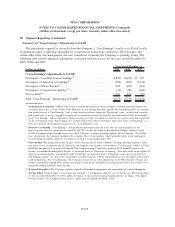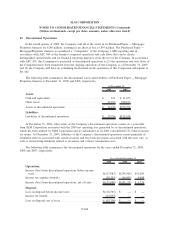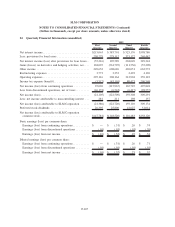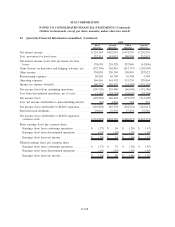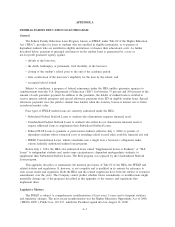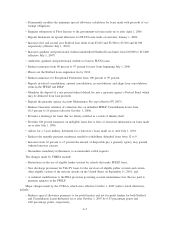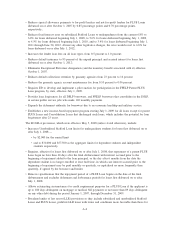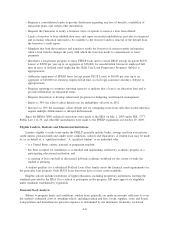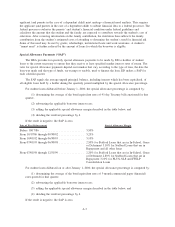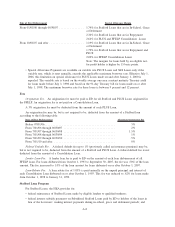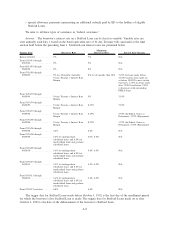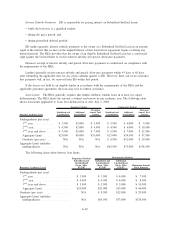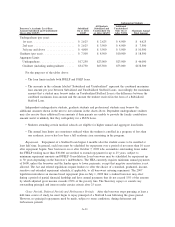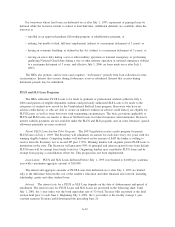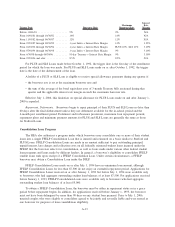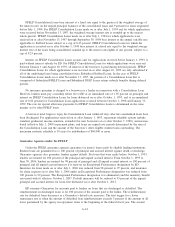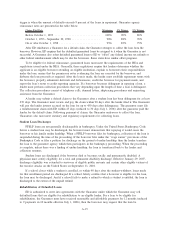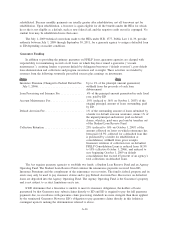Sallie Mae 2009 Annual Report Download - page 241
Download and view the complete annual report
Please find page 241 of the 2009 Sallie Mae annual report below. You can navigate through the pages in the report by either clicking on the pages listed below, or by using the keyword search tool below to find specific information within the annual report.• Requires a consolidation lender to provide disclosures regarding any loss of benefits, availability of
repayment plans, and certain other information.
• Requires the Guarantor to notify a borrower twice of options to remove a loan from default.
• Limits a borrower to loan rehabilitation once and, upon successful rehabilitation, provides for financial
and economic education materials to be available to the borrower and for removal of the default from
the borrower’s credit report.
• Mandates that both the transferor and transferee notify the borrower of certain transfer information
when a loan transfer changes the party with which the borrower needs to communicate or send
payments.
• Introduces a forgiveness program to repay FFELP loans and to cancel DSLP (except no parent PLUS
Loans) at $2000 per year up to an aggregate of $10,000, for non-defaulted borrowers employed full
time in areas of national need (replacing the Child Care Loan Forgiveness Program). Subject to
appropriations.
• Authorizes repayment of FFELP loans (except parent PLUS Loans) at $6,000 per year up to an
aggregate of $40,000 for attorneys employed full time as civil legal assistance attorneys. Subject to
appropriations.
• Requires reporting to consumer reporting agencies to indicate that a loan is an education loan and to
provide information on repayment status.
• Requires Guarantors to develop educational programs for budgeting and financial management.
• Raises to 30% the school cohort default rate for ineligibility effective in 2012.
• Increases to 15% the maximum cohort default rate for exempting loans from rules that would otherwise
require multiple disbursement or delayed disbursement.
Since the HEOA 2008, technical corrections were made to the HEA on July 1, 2009 under H.R. 1777,
Public Law 111-39, and other ED amendments were made to the FFELP regulations on October 29, 2009.
Eligible Lenders, Students and Educational Institutions
Lenders eligible to make loans under the FFELP generally include banks, savings and loan associations,
credit unions, pension funds and, under some conditions, schools and Guarantors. A student loan may be made
to, or on behalf of, a “qualified student.” A “qualified student” is an individual who
• is a United States citizen, national or permanent resident;
• has been accepted for enrollment or is enrolled and maintaining satisfactory academic progress at a
participating educational institution; and
• is carrying at least one-half of the normal full-time academic workload for the course of study the
student is pursuing.
A student qualifies for a subsidized Stafford Loan if his family meets the financial need requirements for
the particular loan program. Only PLUS Loan borrowers have to meet credit standards.
Eligible schools include institutions of higher education, including proprietary institutions, meeting the
standards provided in the HEA. For a school to participate in the program, ED must approve its eligibility
under standards established by regulation.
Financial Need Analysis
Subject to program limits and conditions, student loans generally are made in amounts sufficient to cover
the student’s estimated costs of attending school, including tuition and fees, books, supplies, room and board,
transportation and miscellaneous personal expenses as determined by the institution. Generally, each loan
A-6



